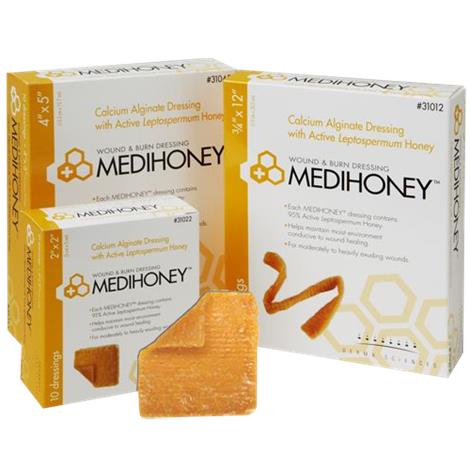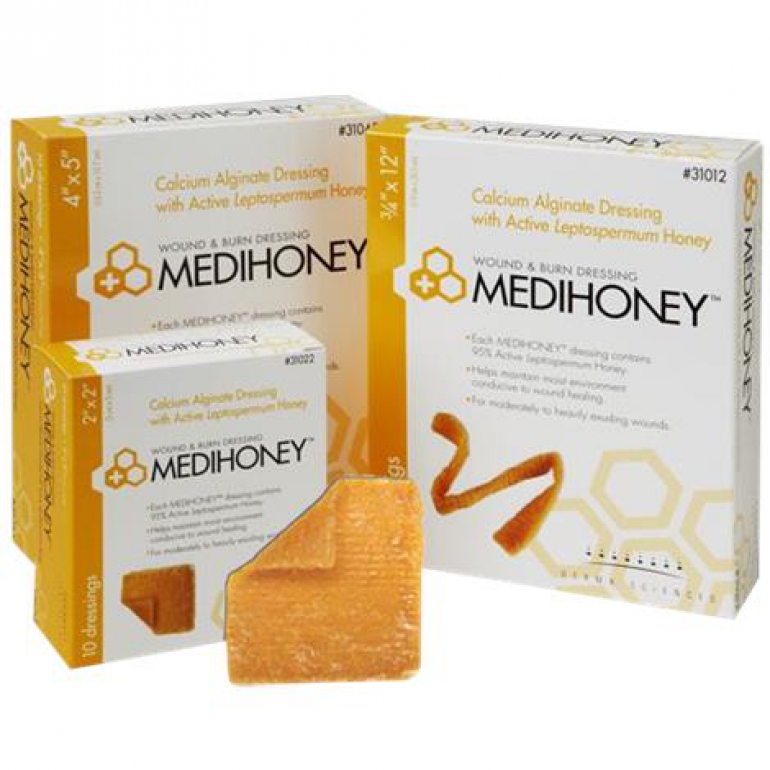From Derma Science
Derma Sciences Medihoney Calcium Alginate Dressing includes 95 percent Active Leptospermum Honey or Manuka. It supports a moist, occlusive environment that is useful for optimal wound healing. This Medihoney dressing is designed for partial to full-thickness burns and wounds that drain moderately to heavily. View more
Benefits of Non-Adhesive Calcium Alginate Dressing
- Easy to apply and use
- Medihoney dressing is ideal for use on chronic or acute wounds due to unique characteristics of Leptospermum honey
- Calcium Alginate Dressing can be used in all stages of wound healing due to versatility and lack of toxicity
- Cleanses and debrides due to its high osmolarity
- Lowers the wound pH, for an optimal wound healing environment
- Medihoney has been used successfully along with other advanced wound care modalities, including being used before, during, and after negative pressure applications
- Used as cover dressings for skin grafts and skin substitutes
- Single use only
- Provides wound fluid absorption capabilities and honey is released continuously to wound bed.
Why Choose Medihoney Calcium Alginate Dressing?
- Used for wound bed preparation
- Useful for all phases of wound healing
- Helps in lowering overall wound pH
- Latex-free
- Non-adhesive
- Sterile
How does Medihoney Calcium Alginate work?
The honey is impregnated into a calcium alginate dressing. As wound fluid enters the dressing, the honey is released while the dressing absorbs and forms a gel, creating an optimal honey healing environment. Medihoney is one of the global leader of medical grade honey products for the management of wounds and burns.
When to use Medihoney Alginate Dressing?
Medihoney Wound Dressing is indicated for the management of wounds such as:
- Diabetic foot ulcers
- Leg ulcers of mixed etiology
- Arterial leg ulcers
- Pressure ulcers
- Venous stasis leg ulcers
- 1st and 2nd degree partial thickness burns
- Donor sites traumatic and surgical wounds
When to avoid Medihoney Honey Dressing?
- On third degree burns
- With patients that have a known sensitivity to honey or any other component present in Calcium Alginate dressing
- To control heavy bleeding
Customer Reviews
There are no reviews written for this product at the time. Maybe you can be the first!


